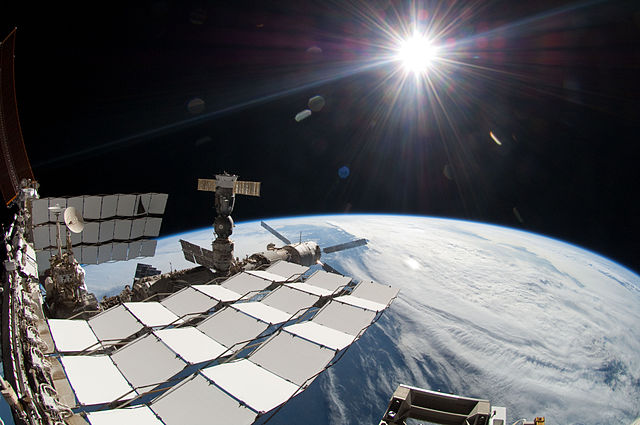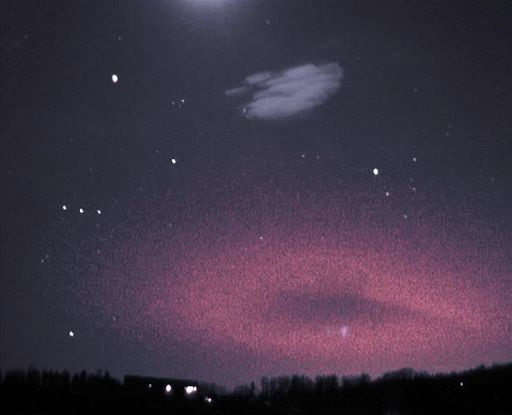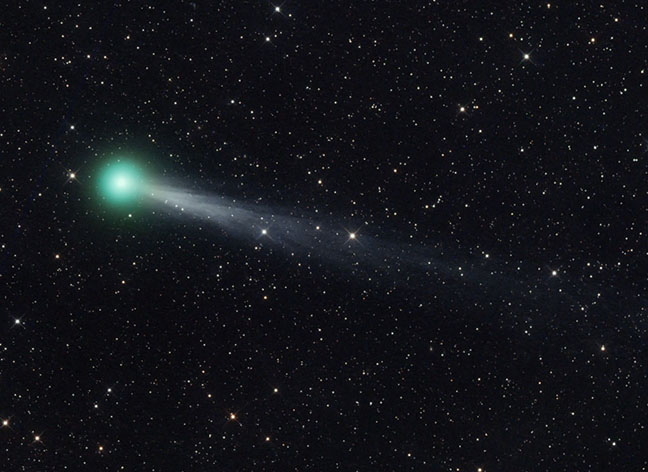Hi Frank, well you don't give up easy do you? Neither do I though, we both stand by our convictions, which is all we can do without empirical science experiments. Yes, you have quotes that suggest things are visible from space, I have quotes from past and present astronauts who say it is totally black out there, so we need those experiments, though I think NASA is quite happy to let the ambiguity stand. Anyway, I'll carry on trying to figure things out from what few experiments have actually been performed, though in typical NASA style, there are still some irregularities in what little info is forthcoming.
Here is the video of Don Pettit preparing to photograph the transit of Venus across the face of the Sun. He had the foresight to bring his own camera filter, as for some reason NASA does not normally carry them on the ISS.
At roughly these times, he makes some comments that are rather misleading:
0:40 can see earth and solar system
The only time the other planets of the Solar system are visible is when they are passing through the band of Earths upper atmosphere, as there is no view from the Cupola of anything except Earth and the upper atmosphere.
4:20 atmospheric effects of earth and venus
This experiment has not been performed before, so he wonders about the effects of Earths atmosphere and the atmosphere of Venus. He is confirming that there is atmosphere in his line of sight to the Sun
6:07 full aperture solar filter
Yes, we can see that it is a full aperture filter, and appears to be a film type filter, possibly Mylar, but he does not say exactly which filter it is, and I can find no details. It is referred to in some articles as being a "neutral colour solar filter", but does he mean a neutral density filter? Probably not, as NASA seems to be very wary of using ND filters, even though I was advised by military R&D boffins that the ND filter would be the only way to see the Suns true colour from space.
7:30 observation of earth and near earth vicinity
Confirming that they can not see deep space.
ISS Astronaut Don Pettit & the Transit of Venus
https://www.youtube.com/watch?v=52-yvMu8vz0
Here are the images from the ISS:

These series of images were taken by the Expedition 31 crew onboard the International Space Station during the Transit of Venus event. The images in blue used a 1200mm lens with a neutral color solar filter on the Nikon D2x, while the orange images used an 800mm lens with a 762nm narrow band pass filter on the Nikon D2x. This transit was the first that was captured from space, as previous crew members did not have solar filters onboard to capture imagery during the last transit in 2004. (NASA)
Viewing the Transit of Venus From Space
https://www.nasa.gov/mission_pages/stat ... space.html
There were 2 filters used then, one being a 762nm narrow band. But 762nm is in the IR, and not visible by eye. How did he photograph it then? The camera was one of the modified ones that has extended IR capabilities, and it would show as red/orange on the LCD camera display. Why 762nm? That emission line is from O2 in the upper atmosphere, and is not sunlight filtered by the atmosphere, but generated by the O2 in the line of sight, by UV/EUV solar energy.
The blue images would seem to confirm a Mylar filter, but Mylar is not a "neutral colour" filter. On the NASA Flickr page though, they show another "test image" that is not from either of the filters.
https://www.flickr.com/photos/nasa_jsc_ ... 649730820/
UT154 solar test CO 934_0253
No further info is available, and the image has no ISS roll number, but the CO bit would seem to indicate it is not from the Cupola, and the IR images must have been taken from a location where there was an extended viewing opportunity, as from the images from the Cupola, Venus is not seen at the mid point of the transit. The whole transit was not visible from the Cupola, and the images and time stamps and Celestia simulation confirm this. This leads me to believe that the Sun is not visible by eye when looking away from Earth at the ISS altitude, but only in IR. Lets have some real science NASA, documented and verifiable.
In order to change an existing paradigm you do not struggle to try and change the problematic model. You create a new model and make the old one obsolete. -Buckminster Fuller




